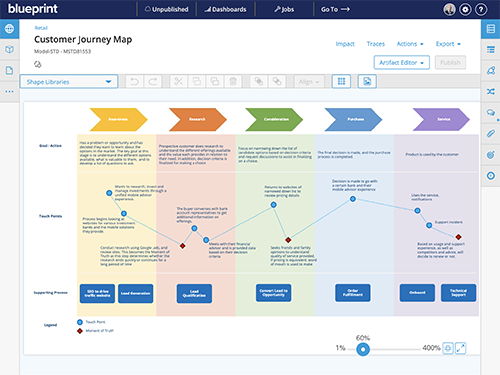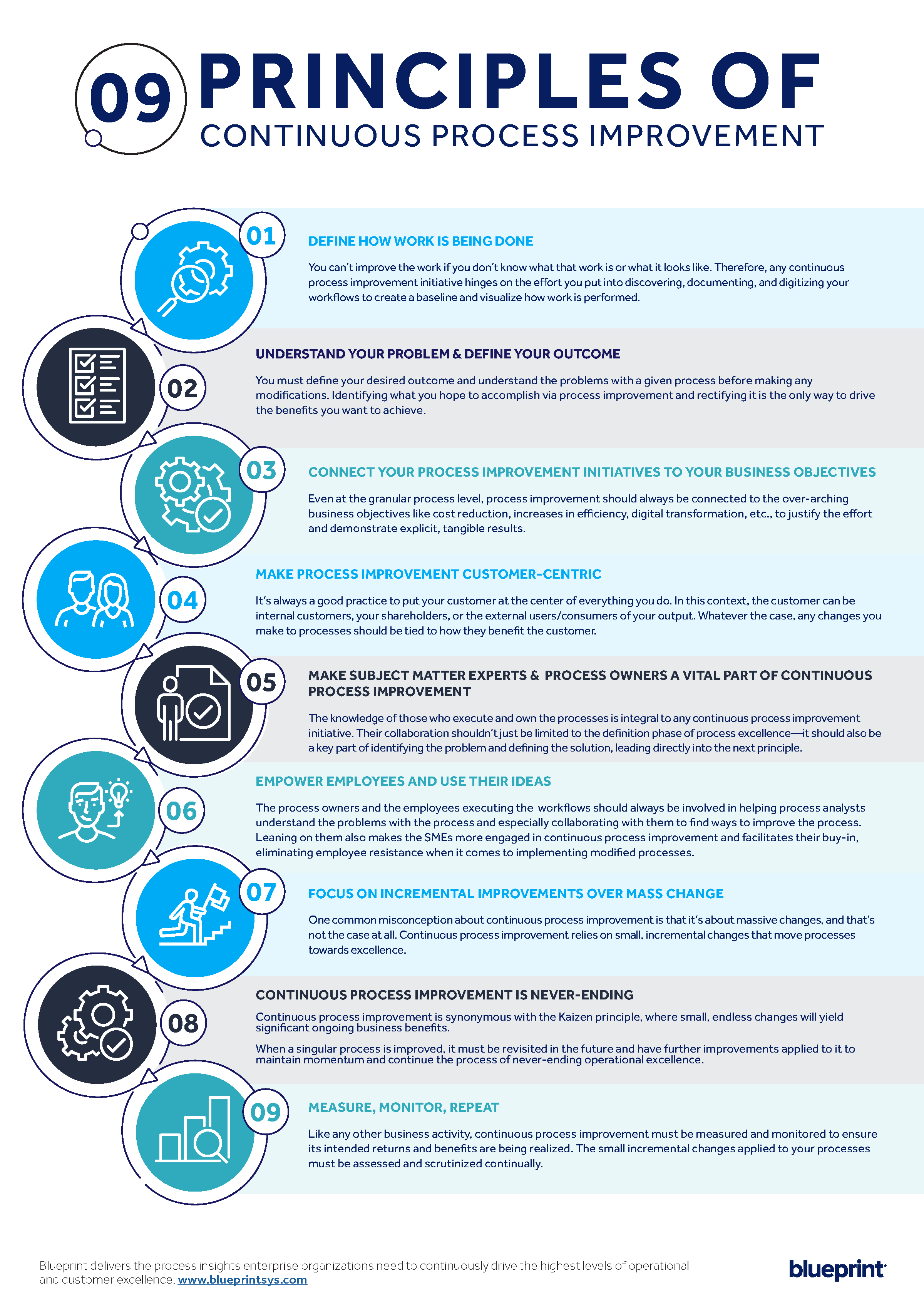The Importance of Customer Journey Mapping and How to Do It
A primary principle of continuous process improvement is making your process optimization efforts customer-centric. There’s no better way to do that than by understanding your customers’ lifecycle and building a customer journey map.
Clare Muscutt, founder of CMXperience put it quite well when she said, “Building a good customer experience does not happen by accident. It happens by design.” And according to Gartner, 77% of B2B buyers state that their last purchase was “very complex or difficult.”
With many different options and steps along the way, there are a lot of touch points in today’s digital-centric buying process. It’s never been more important to understand all of them through customer journey mapping, which can help make the process as seamless as possible.
The reality is simple… if it’s hard to buy and use your solution, product, or offering, you might lose valuable accounts to your competitors that have taken the time to improve and optimize the customer lifecycle by understanding it via customer journey mapping.
What is Customer Journey Mapping?
Customer journey mapping is modeling a customer’s experience with a company into a visual representation. It’s a way to visualize and understand all the ways a customer interacts with your company. It is not only limited to the buying journey, but instead, the entire lifecycle of the customer.
As such, a customer journey map, while not necessarily linear, does follow a timeline that might include their first interaction with your website, the interactions with your sales team, conversion, onboarding, cancellation, etc.

The customer journey is not linear because customers can interact with your company through multiple channels such as numerous digital channels to in-person, and so on.
Why is Customer Journey Mapping Important?
Customer journey mapping is so important because the harder it is for a customer to buy and interact with your company, the bigger the chance you run of losing that customer to a competitor. It’s crucial that companies clearly understand how their customers interact with their organizations so they can optimize that process and make it as seamless as possible.
Clearly understanding the customer journey is only made possible when you visual it and create a customer journey map so you can design a better, more seamless experience and put the customer where they belong – at the center of everything you do.
“There is only one boss. The customer.”
- Sam Walton
What’s Included in a Customer Journey Map
A customer journey map should include the following elements:
- The buying process – the first major milestone of the customer journey. It’s all the steps your customer takes to buy your product, service, or offering.
- Customer actions – all the actions a user takes along their journey, such as searching online for the solutions that address their issue, requesting a demo or sales call, etc.
- Customer emotions – the emotions a customer might feel at each stage of their journey. For example, during the initial buying stages, it might be excitement, and at the first in-product experience it might be confusion.
- Pain points – whatever causes negative emotions during the customer journey. For example, if the first in-product experience causes confusion, this might be due to the lack of an onboarding strategy, which would be the pain point.
- Solutions – ideas on how the customer journey can be improved.
How to Design a Customer Journey Map
There is a common, structured approach to effective customer journey mapping involving the following 5 steps:
1. Set objectives
Define what it is that you want to improve with customer journey mapping. Setting clear goals and objectives will enable a more strategic and effective approach to improving the customer experience. Do you want to reduce the buying process and make your sales cycles shorter? Reduce churn? Etc.
2. Define and research your personas
Understand who your customers are to cater to them and their specific wants and needs. One approach is to interview your current customers and anyone in your organization that interacts with customers to gain better insight into what their journey was, where they encountered pain points, how they found you, how easy it was for them to purchase your goods or services, and how they came to that decision.
3. Record all customer touchpoints
Define how and where customers have interacted with your company and their experience during those interactions. This should be the biggest component of your customer journey map.
4. Map out the current customer journey
Design and model the current customer journey as you understand it, collaborating with all appropriate stakeholders in your organization that have the insight on what the customer journey currently looks like and how it could be improved. All pain points and potential areas for improvement should be flagged in this step.
4. Map out your future state
Model and design what the future customer journey should look like that makes the customer experience more seamless and addresses the pain points you identified in the previous step.
Like any continuous process improvement exercise, the importance of customer journey mapping is not an isolated activity. Your customer journey maps should be continuously revisited, assessed, and analyzed to ensure there is an ongoing commitment to prioritizing the customer and optimizing the customer journey.
Learn More: The 9 Principles of Continuous Process Improvement
Share this
Recent Stories

Customer Journey Mapping: How to do it like an expert

4 Signs That You're a Customer Journey Mapping Pro

